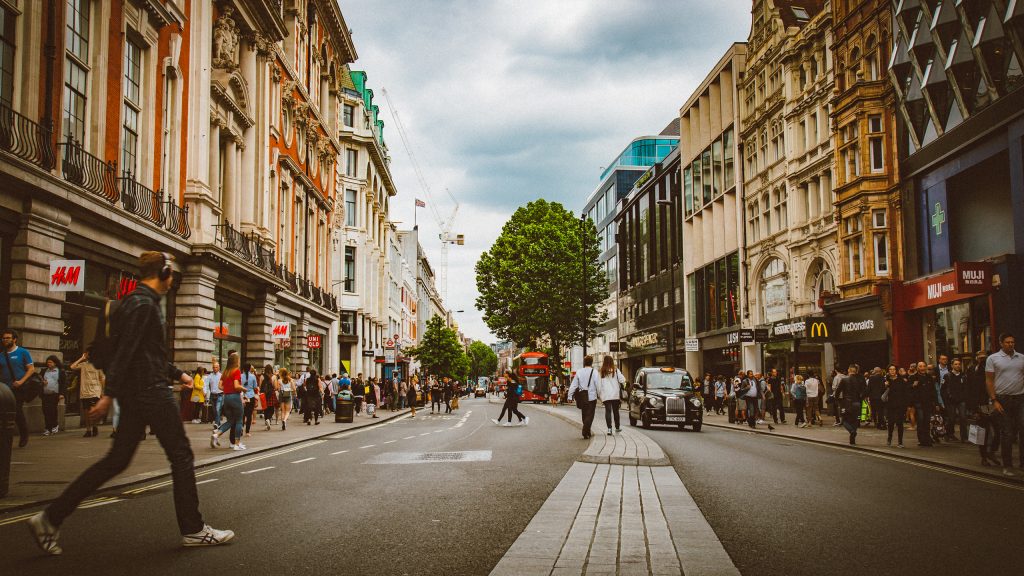Rebirth of the High Street

Two weeks ago, AKOU hosted a panel of thought-provoking industry experts and an audience of inspiring change-makers, to challenge the notion that the high street is dead in the face of a changing retail landscape and evolving consumer demand.
AKOU believe that magic happens when unlikely interactions and connections occur and is committed to facilitating these important intersections. High streets, town centres and shopping centres are true common ground, spaces where people from different walks of life converge to go about their daily business, in a way unlike many other places. We may underestimate how important and powerful this is, viewing these places as commercial or transaction-based environments, when in fact they have a much greater and deeper social purpose.

Joining us on our panel to investigate this concept and more, AKOU welcomed:
Jacqueline Bleicher – Urban Planner and Founder of Global Urban Design
Hannah Phang – Marketing and Advocacy Manager at Futerra
Simon Parkes – Founder and Creative Director of Public London
Laura Willoughby MBE – Founder of ClubSoda
Hannah Phang kicked things off by having us imagine the high street as a space that existed to be in service of the greater good; a place that connected communities more deeply where we could all authentically express ourselves. To image a high street that was something the world really needed, for social good and for the good of the planet. Spaces that present an opportunity to retailers to re-think consumerism as a one-way transaction and instead create physical spaces to bring their brand values to life, providing the customer with an experience that is beyond transactional and which can encourage more sustainable purchasing decisions and social behaviours.
What does this retail environment look like? How do designers, planners and developers achieve these objectives? Urban Planner Jacqueline Bleicher explained the importance of collaboration and co-design; asking a community what they need, what they like, what they dislike, what their top priorities are, what would they keep and what would they change about a place.
Transforming environments through a process-led approach, Jacqueline explained how these early conversations create an inclusivity that enables co-design, co-creation and collaboration. It builds relationships and partnerships that bring to life a shared vision and create better places for diverse user groups.
We also learned about the importance of intelligent design for improved pedestrian experience, increased footfall, flexible and meanwhile use and clever ideas for the re-use of existing assets. Collaboration was the key word though, being linked to better outcomes for inclusivity, design, context, spaces and possibility.
Taking these ideas further and describing what they might look like as a retail concept, Simon Parkes from Public London explained how retailers working together can transform their spaces into experiential and fluid experiences for their customers; creating a real differentiation between their physical and digital retail worlds.
With retailers typically operating in a siloed approach, experiences can feel disjointed and lack inspiration. Discussing how retailers can support each other to achieve a common goal, Simon visualized a seamless and fluid shopping journey for the customer through the sharing of resource and product by retailers. Additionally, the provision of community spaces where groups can take responsibility for the space, can be a way for big brands to give back to the communities, in a way that can have a greater impact than money could buy.

Bringing a fresh perspective on the time of day high streets are used, we heard from Laura Willoughby who shifted our thinking to consider the public and social spaces these environments provide and the added community and social benefits they can deliver. When we make space in these locations for groups and activities that are not usually seen in the high street, we bring attention and welcome participation to causes that are typically less visible to the general public.
We no longer live in a 9am – 5pm world however most high streets and town centres are geared this way,
Greater creativity, diversity and hours of operation also creates opportunities for businesses to cater to the 1.6m workers in London’s night-time economy. We no longer live in a 9am – 5pm world however most high streets and town centres are geared this way, neglecting essentially 1/3 of London workers who also need goods and services – and social activities and entertainment – just at alternative times of the day.

Opening up the discussion to our engaged audience for Q&A aired even more concerns in the quest for solutions to this complex topic. With the participation of individuals from leading organisations including City of London, Allsop and Forum for the Future, topics raised included financial obligations of large multinationals (Amazon and their tax aviation for example), the shortcomings of existing retail business models and the needs of people who rely on high streets as a home. On a more positive note, we also heard some inspiring success stories from town centres and businesses who are going a long way to getting things right – from Peterborough to New York City.

So, what do we need and want from our future high streets and town centres and how can we help to shape them to best serve all users as well as the wider community?
We believe there is tremendous opportunity for reinvention and AKOU continues to research and explore this area through our work with London’s place-shapers and in other ways such as inviting you to be part of our events and discussions. Please get in touch for an invitation to our next event or to discuss how our research and insights can add value to your business.
AKOU is a data insights company specialising in the built environment sector. Click here to out more about what we do
